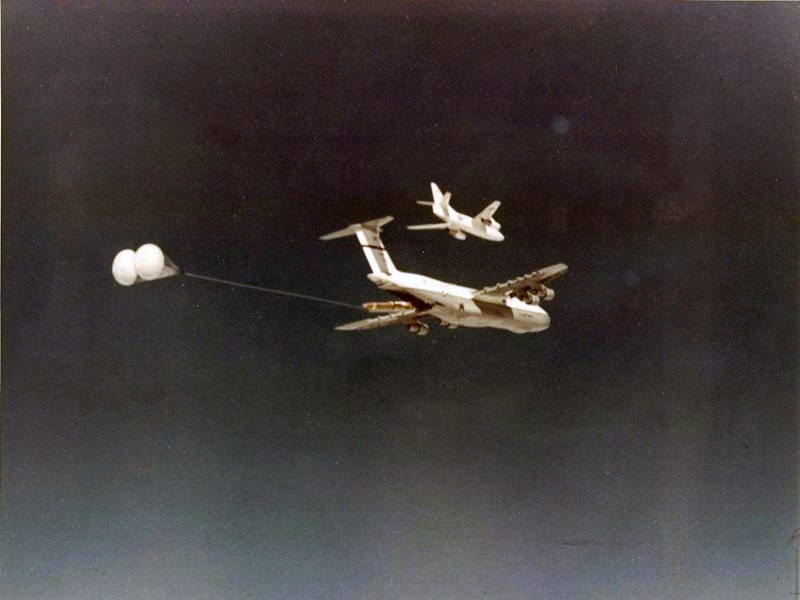From Wikipedia:
Given its original design as a carrier-based, supersonic, nuclear heavy attack aircraft, the Vigilante's main armament was carried in a novel "linear bomb bay" between the engines in the rear fuselage, which provided for positive separation of the bomb from the aircraft at supersonic speeds. The single nuclear weapon, commonly the Mk 28 bomb, was attached to two disposable fuel tanks in the cylindrical bay in an assembly known as the "stores train". A set of extendable fins was attached to the aft end of the most rearward fuel tank. These fuel tanks were to be emptied during the flight to the target and then jettisoned with the bomb by an explosive drogue gun. The stores train was propelled rearward at about 50 feet per second (30 knots) relative to the aircraft. It thereafter followed a typical ballistic path.[6]

A YA-5C prototype, 1963
In practice, the system was not reliable and no live weapons were ever carried in the linear bomb bay. In the RA-5C configuration, the bay was used solely for fuel. On three occasions, the shock of the catapult launch caused the fuel cans to eject onto the deck resulting in one aircraft loss.[7]
http://en.wikipedia.org/wiki/North_...ile:North_American_A-5A_internal_bomb_bay.PNG
Who knew?
Given its original design as a carrier-based, supersonic, nuclear heavy attack aircraft, the Vigilante's main armament was carried in a novel "linear bomb bay" between the engines in the rear fuselage, which provided for positive separation of the bomb from the aircraft at supersonic speeds. The single nuclear weapon, commonly the Mk 28 bomb, was attached to two disposable fuel tanks in the cylindrical bay in an assembly known as the "stores train". A set of extendable fins was attached to the aft end of the most rearward fuel tank. These fuel tanks were to be emptied during the flight to the target and then jettisoned with the bomb by an explosive drogue gun. The stores train was propelled rearward at about 50 feet per second (30 knots) relative to the aircraft. It thereafter followed a typical ballistic path.[6]

A YA-5C prototype, 1963
In practice, the system was not reliable and no live weapons were ever carried in the linear bomb bay. In the RA-5C configuration, the bay was used solely for fuel. On three occasions, the shock of the catapult launch caused the fuel cans to eject onto the deck resulting in one aircraft loss.[7]
http://en.wikipedia.org/wiki/North_...ile:North_American_A-5A_internal_bomb_bay.PNG
Who knew?


